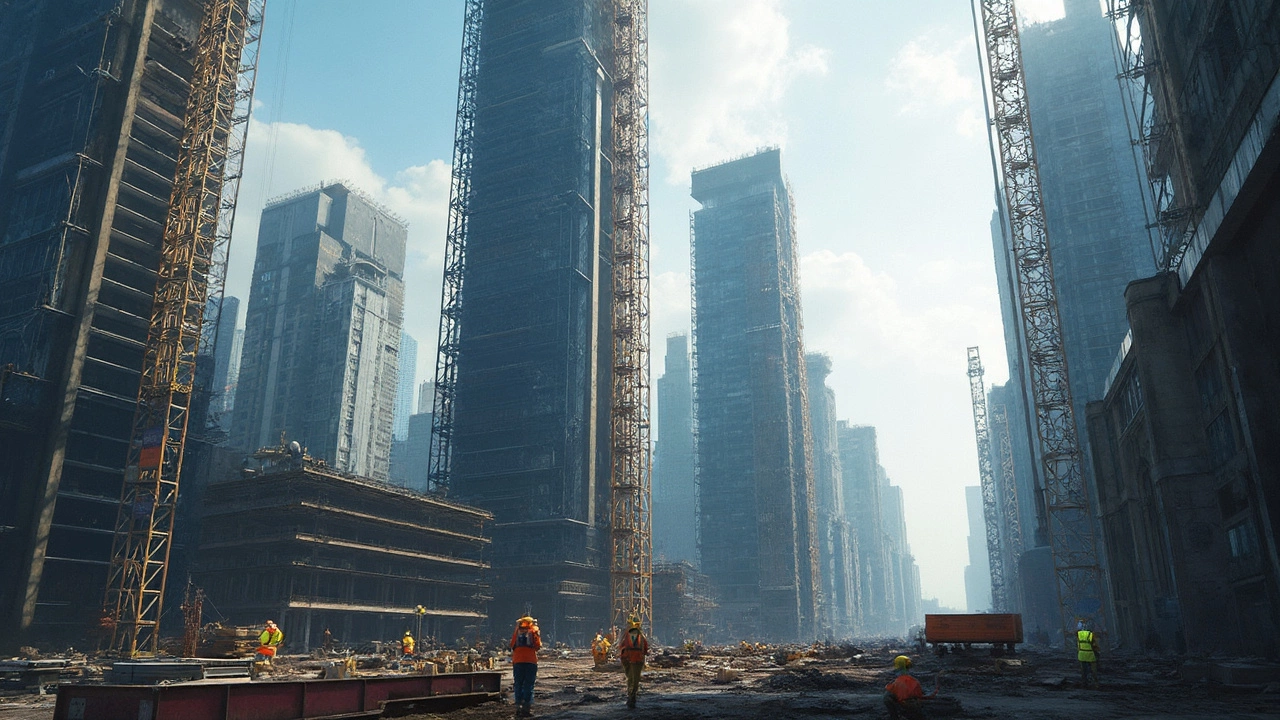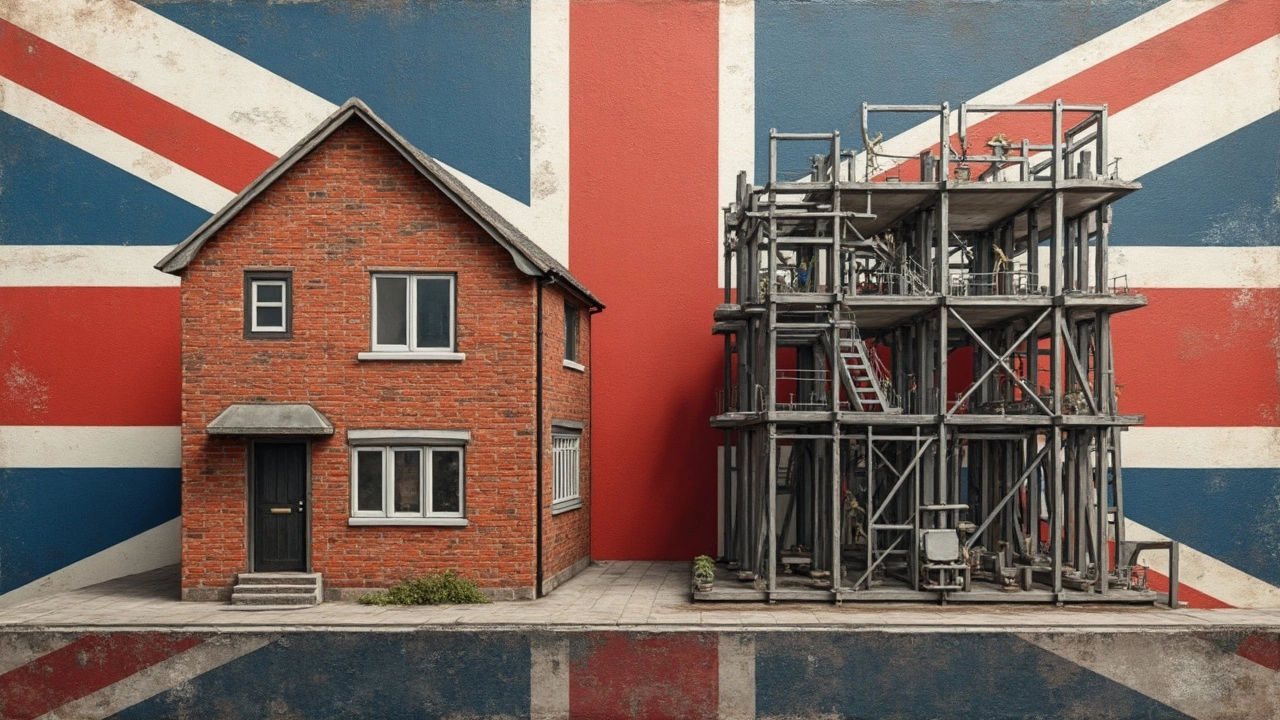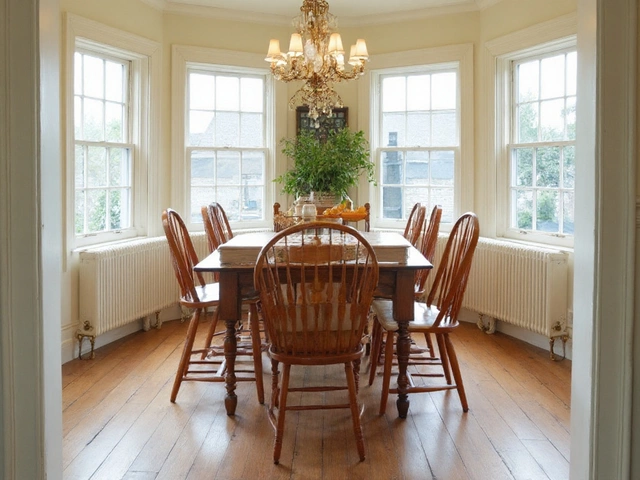
When you imagine building something big like an office tower, you might wonder if it’s as expensive as folks say. Turns out, commercial construction can indeed knock your socks off with its price tag compared to building a home. But why is that? Simply put, it boils down to a bunch of factors that aren’t exactly pocket change.
For starters, commercial projects usually deal with tougher building codes and regulations. You're not just slapping together bricks and mortar; there are rules galore that can impact just about every aspect. With commercial construction, you're looking at a mountain of paperwork and inspections, which naturally racks up the costs.
And then there's the matter of materials and labor. Ever noticed how offices and malls look vastly different from your average house? That’s because they use different—and sometimes more expensive—materials and require specialized labor, which aren't cheap. All these elements pile onto the expense scale, making commercial ventures generally more costly than residential ones.
- Understanding Cost Variations
- Material and Labor Differences
- Building Codes and Regulations
- Timeline Constraints and Project Management
- Tips to Mitigate Costs
Understanding Cost Variations
Ever wondered why a commercial construction project often leaves the bank account looking lighter than a residential construction one? The reasons aren't as mysterious as they may seem. In fact, they’re quite logical once you break them down, and they start with the project's scale and scope.
Commercial buildings typically serve more people than a home does. Think malls, offices, or hotels versus a single-family house. This leads to larger, more complex designs and a need for sturdier structures. Plus, these buildings must meet higher safety standards due to the higher volume of daily visitors.
Now, consider the location. Commercial projects often spring up in urban areas where land costs an arm and a leg. More costly land naturally drives up the total expense of the project. Not only that, building in such bustling areas often means battling with existing infrastructure, which can add to the complexity and cost.
But wait, there’s more. Commercial projects are oftentimes bound by stricter building codes and regulations. This isn't just red tape for the sake of it—these codes ensure the building can handle a significant number of people safely. But adhering to them means more time, resources, and, you guessed it, money.
In terms of labor, commercial construction requires specialists—think engineers, architects, and skilled laborers—who often demand higher pay compared to the typical workers on a residential project. These experts are vital for ensuring that everything not only works but works safely and efficiently.
Let's take a quick look at a comparison for more context:
| Element | Residential Construction | Commercial Construction |
|---|---|---|
| Regulation Level | Moderate | High |
| Labor Costs | Lower | Higher (specialized) |
| Material Quality | Standard | High-end |
| Project Scale | Small to Medium | Medium to Large |
Understanding these factors helps pull back the curtain on why commercial construction demands a bigger budget. Sure, it might feel like stacking dollar bills to the sky, but knowing what you're getting into with all these cost variations might just save you from some future headaches.
Material and Labor Differences
When it comes to distinguishing between commercial construction and residential construction, materials and labor are a big deal. Think about it: an office building is built to handle way more wear and tear than a regular house, so it needs sturdier materials. We're talking steel frames, reinforced concrete, and high-quality glass, just to name a few. These materials don’t come cheap, and neither does the specialized labor required to work with them.
In commercial projects, it’s not uncommon to see hefty use of steel because it provides the strength and durability needed for large structures. This contrasts with many homes that primarily use wood, which is relatively cheaper but not as strong. Similarly, commercial flooring often involves higher-grade materials like polished concrete or tiles instead of your typical residential carpeting or wood paneling.
Let's not forget about the labor aspect. Commercial construction requires a workforce skilled in handling big materials and complex installations—like HVAC systems, elevators, and advanced electrical setups—which all add up in labor costs. These skilled professionals, like architects and engineers, command higher wages due to their expertise.
To give you a rough idea, here's a quick comparison:
| Aspect | Commercial | Residential |
|---|---|---|
| Frame Material | Steel | Wood |
| Labor Type | Specialized | General |
| Flooring | Tiles/Concrete | Carpet/Wood |
Feeling the difference yet? It's like comparing a high-end sports car to your everyday sedan. Both will get you from A to B, but one is engineered to a tee with all the bells and whistles. For commercial construction, every material and job has to accommodate the building's purpose and ensure safety for lots of people, which inevitably leads to higher costs than you'd typically find with residential projects.

Building Codes and Regulations
Diving into the world of commercial construction, one quickly bumps up against a jungle of building codes and regulations. These aren’t just there to make life tricky—they ensure safety, sustainability, and accessibility. But for anyone footing the bill, these rules can feel like a financial squeeze. Let's break down why this stuff matters and why it's likely costing you more dough.
First off, commercial buildings tend to have stricter fire safety requirements compared to residential ones. Think about it: you're dealing with a lot more people in a space, so the fire exits, sprinkler systems, and alarms need to be top-notch. Then there's accessibility. Commercial spaces must comply with regulations like the Americans with Disabilities Act (or equivalent standards in other regions), which demands features like ramps, lifts, and wider doorways.
Utilities are another significant aspect. Unlike residential spaces, commercial buildings often require advanced HVAC systems, more complex plumbing, and enhanced electrical setups to support higher foot traffic and vast spaces. All this needs to align with national standards and local codes.
- Fire safety: More exits and fire prevention systems.
- Accessibility: Features like elevators are often mandatory.
- Utilities: Industrial-grade systems required for larger capacities.
But don’t be too put off. Understanding these regulations can actually help you plan better. Know what you're getting into early on, and you can budget for these costs, potentially saving headaches—and dollars—down the line. Sure, compliance isn't cheap, but sidestepping those hefty fines or having to redo work? Priceless.
To sum it up, jumping through all these hoops might feel tedious, but these regulations are there to help keep folks safe and make spaces usable for everyone. And whether you’re building the next big skyscraper or simply curious, knowing the weight of building codes offers some valuable foresight.
Timeline Constraints and Project Management
Ever wondered why commercial buildings often seem to take forever to finish? A lot of it boils down to timeline constraints and how these projects are managed. Unlike homes, which can have flexible deadlines, commercial construction is often on a tight schedule because of contracts and potential revenue loss if delayed.
One major factor is the complexity of commercial projects. Think of a hospital or airport—it’s not just about the structure but also about fitting in complex systems like HVAC, security, and technology networks. Coordinating all these takes top-notch project management skills. It’s kind of like juggling flaming swords while riding a unicycle!
Another aspect is how delays can impact the budget. In commercial construction, time is truly money. Each day of delay can spiral into substantial costs, not just for labor but also for equipment rentals and permit extensions. Top that with the pressure of stakeholders who want their project finished ASAP.
Good project management here isn’t just about keeping things on track but also about foreseeing potential hiccups. Missing a tiny detail in the timeline can end up costing big bucks. That’s why effective communication and planning are crucial from the get-go. Regular updates and staying ahead of timelines can make or break the budget.
- Ensure all permits are obtained on time to avoid hold-ups.
- Keep a close eye on supply chain issues, as late deliveries can delay the entire project.
- Add buffer times into the project plan for unexpected delays.
- Engage experienced project managers who can identify and mitigate risks early.
So, next time you see a commercial site peppered with cranes and hard hats, know that there’s more than bricks and mortar at play—it’s a race against the clock where strategic planning is the hero keeping things together.

Tips to Mitigate Costs
Building a commercial project can seem like a money pit, but there are smart ways to keep those dollars in check. Here are some practical tips that could save you from blowing your budget.
First up, getting a solid plan in place is a game-changer. Make sure every detail is hammered out before construction kicks off. It’s all about avoiding those pricey mid-project changes. A well-thought-out plan means fewer surprises and less cash flying out the window.
Next, consider the materials you’re choosing. While it’s tempting to go all out with top-of-the-line everything, sometimes it’s better to think smart, not fancy. Look for materials that offer good durability without breaking the bank. Partner up with reliable suppliers who get that you’re looking for quality minus the hefty price tag.
Managing labor efficiently is another biggie. Skilled labor is crucial, but so is smart scheduling. Avoiding overtime and ensuring your crew is well-organized can save you a pretty penny. Think about hiring a project manager rockstar who knows how to keep things tight and on track.
You can also take the time to dive into incentives and rebates. Some areas might offer financial perks for using eco-friendly materials or energy-efficient designs. Not only could this pad your wallet nicely, but it’s also a win for the environment.
Lastly, don’t skimp on tech. Using construction management software can streamline everything, from budgeting to timelines, giving you a crystal-clear picture of what's happening on-site.
Here's a neat way to track those potential savings:
| Category | Potential Savings |
|---|---|
| Efficient Planning | 10-15% |
| Material Choices | 5-10% |
| Labor Management | 5-20% |
| Incentives/Rebates | Varies |
Sure, commercial construction is pricey, but with these handy tips, you might just keep your expenses under control. The key is to be proactive and plan smartly. Happy building!




